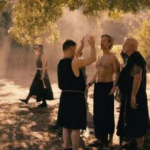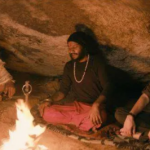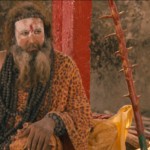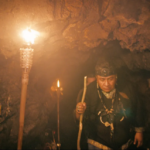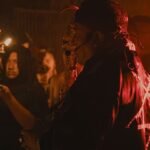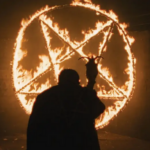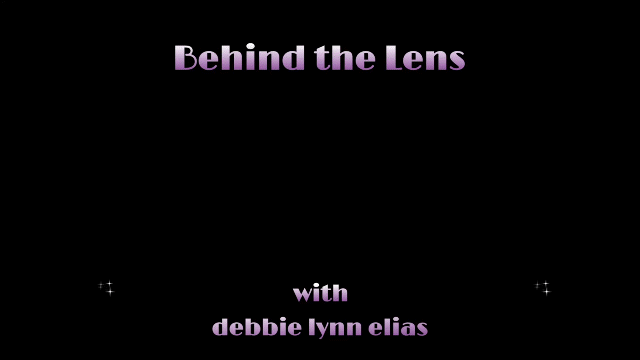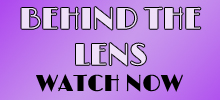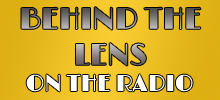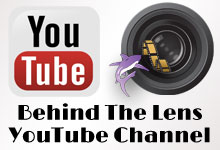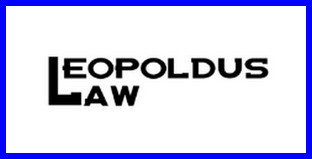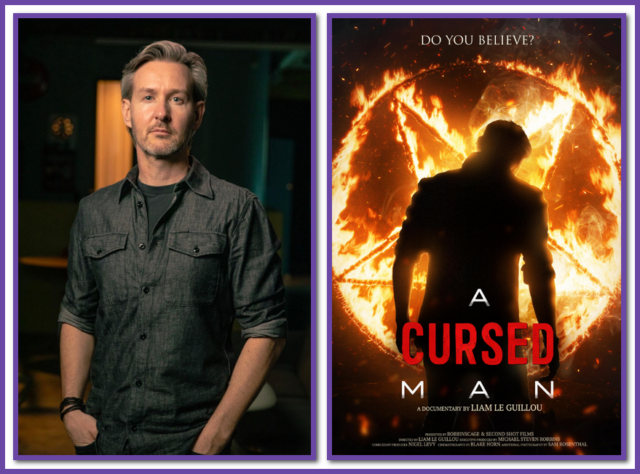
In this exclusive interview with documentarian LIAM LE GUILLOU, we learn about his quest to have a curse placed upon himself and, as the subject of this extremely interesting documentary, A CURSED MAN, his globetrotting exploration of the dark magicks of voodoo, hoodoo, and making a pact with Satan. It’s an interview and a film like no other!
SYNOPSIS: Documentary filmmaker Liam Le Guillou enters the world of witchcraft and the occult, searching for an answer to the question “Is magic real?” Seeking out some of the world’s most powerful dark magic practitioners, Le Guillou will ask the unthinkable – will they put a Curse on him. Meeting with Witches in California, Voodoo practitioners in New Orleans, Tantrics in India, and even a Satanist Shaman in Mexico, the filmmaker exposes himself to some of the world’s darkest magic. On his journey, Le Guillou meets with psychologists and scientists studying the real-world effects of magic and the power of belief. As the consequences of his request begin to hit home, Le Guillou seeks out help from the very witches that warned him of his actions, forcing him to question the nature of reality in this dangerous, never-before-seen, dark social experiment.
Filmmaker LIAM LE GUILLOU goes in-depth with me in discussing his latest documentary A CURSED MAN, starting with his initial skepticism and the psychological and spiritual impacts he experienced. As he details his extensive travel to various countries, including Mexico, India, and New Orleans, to find practitioners willing to curse him, he highlights the challenges of securing funding and gaining access to spiritual rituals. Featuring interviews with diverse practitioners, a big question loomed as to whether or not, and who, would allow filming of themselves as well as their rituals, something we delve into at length as Liam emphasizes the importance of respectful documentation and the cinematic quality of the film, which was achieved on a tight budget.
Initially skeptical about the effectiveness of curses, Liam didn’t truly believe anyone could actually put a real curse on him. He was more curious and didn’t think anything would actually happen. As he explains, “I didn’t believe anyone else actually had the ability to create a curse and put that on someone else. So I think that I wasn’t too concerned because I didn’t think it would work.” His skepticism and desire to explore alternative spiritual practices drove him to seek out a curse, essentially challenging the concept to see if anything would actually occur. He was more interested in documenting the journey and understanding different spiritual practices than genuinely expecting to be harmed.
Discussing his research, which was ongoing over the years of his travel documentary work, Liam was particularly inspired by a moment in India where he saw a tantric practitioner performing a spiritual prayer ceremony. Over the years, he gathered stories and insights from location producers in different countries about alternative spiritual beliefs. For A CURSED MAN, he initially planned to visit New Orleans, Mexico, and India, knowing he might not find anyone willing to curse him. His approach was highly investigative – often not knowing who he would speak with until arriving in each country. He had to build trust by meeting practitioners in person, explaining his respectful intent to explore spiritual practices. Not surprisingly, most spiritual practitioners initially refused to participate, but some were intrigued by the unique concept. He worked to demonstrate his genuine interest and respect for their practices, which helped him gain access to rituals and interviews that had never been captured on film before. The research process itself was fluid, with editing and story development happening simultaneously. As unexpected experiences began occurring, Liam worked with story producer Nigel Levy to shape the narrative, ultimately adding interviews like the one with psychologist Dr. Michelle D’Amico to provide additional context and perspective.
As Liam quickly learned, filming was extremely challenging, particularly in locations like Satan’s Cave in Mexico. Describing the cave as “swarming with 1000s of bats” , they had to wait an hour for the bat population to die down enough to enter. Even then, they were still being hit in the head by bats during the ritual. Logistically, securing access to spiritual practitioners was difficult. Many doors were slammed in his face, and practitioners were initially hesitant to be filmed. He had to travel to each location and meet people face-to-face to build trust and explain his respectful intentions. Often, he didn’t know who he would be speaking with until he arrived in a country.
The production required a leap of faith, with Liam and his team having to be flexible and adaptable. They weren’t sure if they would find anyone willing to perform a curse, and the story evolved as they went along. His cinematographer, Blake Horn, along with the second camera operator, helped capture the logistically challenging and unique visual elements of these spiritual rituals, which Liam notes had never been filmed in this way before in documentaries.
Also, the film’s editor, Liam’s editing process was adaptive and collaborative. Initially, he planned to make a documentary celebrating alternative spiritual practices, but as he reviewed footage, he realized the story was evolving around his personal psychological experience. He worked closely with producer Nigel Levy to shape the narrative objectively, as Liam was simultaneously directing, starring in, and editing the film. Levy pushed Liam to include challenging scenes that might not have made him look perfect, emphasizing the importance of honesty in storytelling. The post-production schedule ended up being nearly a year longer than originally planned, as they needed to rethink the story’s direction. This included adding interviews with, among others, psychologist Dr. Michelle D’Amico, to provide additional context and balance to Liam’s journey.
Approaching the editing by finding the right tone through music and sound design, Liam carefully selected and engineered library music to create the appropriate emotional undercurrent for the documentary that would fulfill his goal of “creating a musical landscape.” This allowed the editing process to be fluid, allowing the story to develop organically based on the experiences and footage captured during his journey. As for the score, “I used found library music and engineered it myself to create a score, partly due to budget constraints and partly because, as an editor, I needed to find the right tone. I spent a lot of time finding the right music and even added multiple audio tracks (around 48) to build the sound design. My goal was to create a musical backdrop that wouldn’t overpower the story but would enhance the documentary’s emotional journey. While I would like to work with a composer in the future, for this film, I crafted the musical approach myself to maintain the precise tone I wanted” and ensured the audio design complemented the documentary’s spiritual and investigative tone without becoming melodramatic or sensationalistic.
So, sit back and relax, break out the Holy Water, crosses, rosaries, Bibles, and whatever else makes you feel protected, and check out this exclusive interview with LIAM LE GUILLOU talking A CURSED MAN.
TAKE A LISTEN. . .
by debbie elias, exclusive interview 03/19/2025
A CURSED MAN is available on VOD on March 25, 2025. (Make sure to turn on the lights when the documentary reaches Satan’s Cave!)

